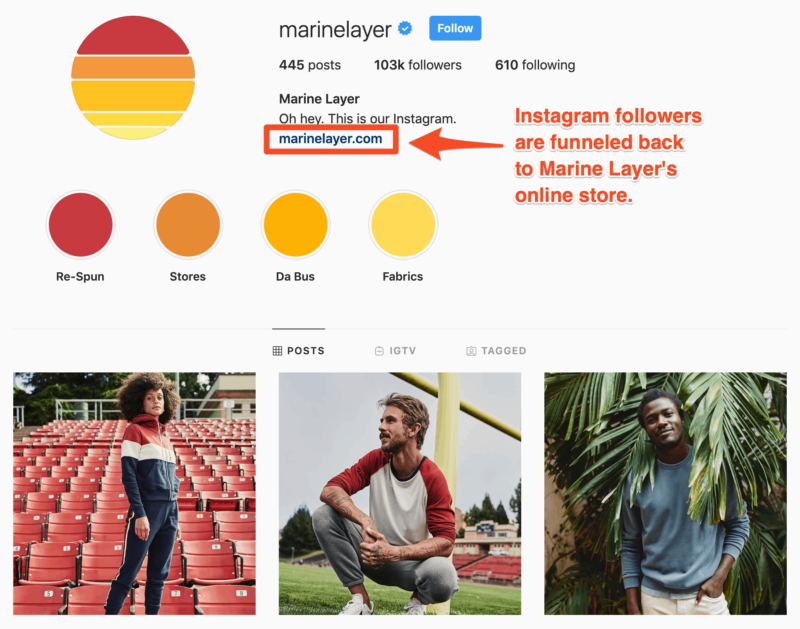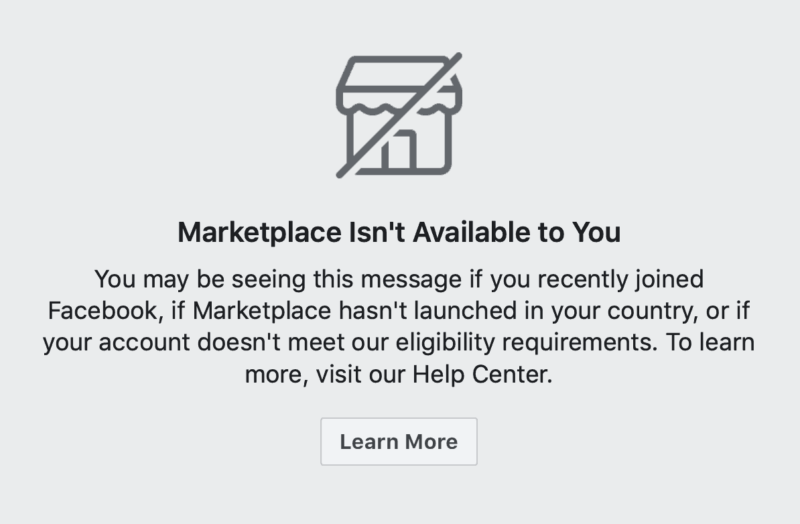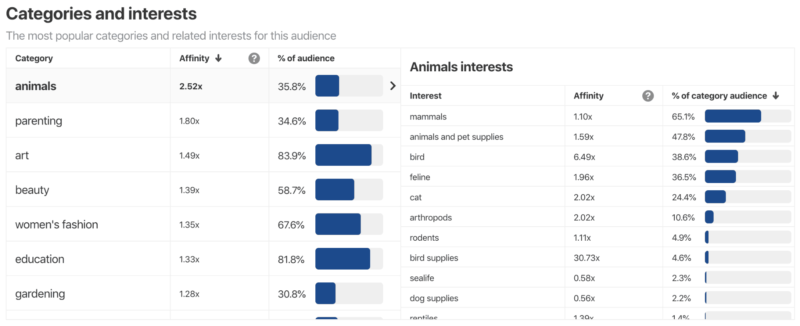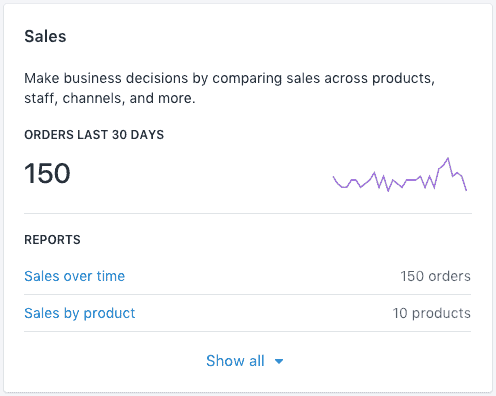Start selling products on social media today
Nearly everyone is on social media, and, if Rojo the Llama can grow 30.2K Instagram followers, there’s no reason you can’t generate a profit selling products with your own eCommerce business on a social platform (or two). You just need to know where to start and the steps to take once you’re firmly planted on the path.
Fortunately for you, others have already found success with social media eCommerce. So, you can look to them for inspiration. Here, you’ll find an extended guide to building an eCommerce business with social media. And, you’ll see inspiration from successful sellers.
If you’re new to online retail and currently offer products or you’ve been thinking about it for a while and you’re ready to get started, this is where you should be. Learn how to present your products, increase your reach, and maximize your conversion rate on social platforms.
Read more: 5 Great Ideas to Increase Your Social Media Conversion Rate
What is the role of social media in eCommerce?
Social media and eCommerce are like Beyonce and Jay-Z. Alone, each has undeniable potential. Together, they’re virtually unstoppable.
The idea of “social selling” dates back as far as the earliest bartering. And, it has always been crucial to trade. People develop relationships as key a component of the sales process. If someone doesn’t like you, they avoid you at all costs.
On the other hand, if someone has a rapport with you, they’re likely to enjoy your interactions. And, they’re more inclined to buy from you.
What is a social seller?
A social seller is anyone who integrates relationship-building with their sales processes. While social selling once represented an apothecary/general store owner/innkeeper putting in the effort to develop face-to-face relationships with customers, times have changed.
Today, an enormous portion of personal and professional relationships take place on social media. People are always looking at their phones. Many consumers are more concerned with Facebook and Instagram posts than they are what’s happening right in front of them.
So, if you want to sell, you need to meet people where they are. And, in case you still need to be convinced, social media has a 100% higher end-to-end sales conversion rate than outbound marketing. Now, learn how it works.
How do you sell products on social media?
How does social selling work? In this case, the role of social media in eCommerce can take two forms:
- eCommerce Social Media Marketing
Use social media marketing (SMM) to promote your online store. - Social Media as an eCommerce Platform
Offer your products directly to shoppers on a social media marketplace.
And, if you so choose, you can implement both simultaneously. Now, let’s look at some modern examples of both types of social selling.
1. How to leverage social media marketing for eCommerce
Your first option is to use social media to market and promote your eCommerce business. Most online stores have business profiles on at least one social platform. They primarily use them to promote their brand and generate online sales.
Let’s take a look at the clothing chain, Marine Layer. The brand leverages an Instagram profile to share images of its products in real-life settings and update followers on what their team is up to. And, their profile bio links back to their online store.
In this way, Marine Layer funnels social media traffic back to their online store. Without delving into the specifics of the company’s tactics, this is how SMM for eCommerce works, in a nutshell.
2. How to utilize social media as an eCommerce platform
And, your second option is to leverage social media as a standalone or supplementary eCommerce platform. Another retail brand, Incy Interiors, sells its high-end home decor and nursery furniture on their website as well as directly via their Instagram profile.
Incy Interiors presents a prime example of using social media as an eCommerce platform. To browse others, check out the #shoppableinstagram hashtag.
Current trends in SMM for eCommerce
If you’re preparing to break into the SMM arena for the first time, you have a slight advantage over the competition. Instead of getting stuck in an “old” way of doing things, like many marketers who have been at it for a while, you get to start fresh.
Fortunately, you can look at the current trends and start implementing them right out of the gate. Here are some tips for social media eCommerce selling in the current market.
What can you sell on social media?
Most products can be sold on social media. You can sell clothing, accessories, home and garden supplies and many other popular items. But, some are restricted. So, what can’t you sell on social media?
On all platforms, the following products are prohibited:
- Prescription drugs
- Alcohol and tobacco
- Firearms and ammunition
- Other hazardous materials
- Adult services and exploitation
In addition, Instagram Community Guidelines prohibit the buying and selling of live animals among individuals. Pinterest Community Guidelines do not allow sellers to advertise products derived from endangered animals. And, Facebook Commerce Policies ban several other products.
- Drug and tobacco-related paraphernalia
- Ingestible supplements and healthcare products
- Body parts and fluids
- Gambling
- Overly-sexualized products
- Subscriptions, digital products, and media streaming
- Real or fake documents or currency
- Services or jobs
So, if you’re selling any of the above products are, social marketing is not for you. The last thing you want is to invest a ton of energy to set up a strategy only to be banned. You might be better off to either find a different marketing channel or new products to sell.
How many product images should you share?
You’ll notice, as you browse e-tailers’ profiles and pages on social media that brands generally post a ton of product pictures and promotions. In many cases, that’s all they share with the social mediasphere. To see Image after image of products and promotions is no different than browsing an online catalog. Frankly, that’s not what social media is intended for.
Brands that are overly self-promotional typically see little to no engagement on social media posts. For higher post engagement, remember that social platforms are for relationship building.
One easy way to make sure you post the right amount of product image content is to follow the 80/20 method. With this method, you share 80% helpful and conversational content and 20% promotional content.
The 80/20 method is a safe and simple way to make sure your posts have the right combination of sentiment and the highest conversion potential.
Where should your social media posts link to?
If you shouldn’t link directly to your products on social media, where should you send the traffic? Here are some ideas about links you can share on the majority of your posts.
Tailor Stitch’s blog is an excellent representation of an eCommerce store with the right idea. They share articles about style and other interesting stories that their customers are likely to appreciate. Moreover, they provide the brand with content to share with social media followers.
One approach is to start a blog and send social media followers to it by placing links to your articles and other content on your social profiles.
On their Pinterest profile, Taylor Stitch again seems to have the right idea. They share content from multiple brands that their followers are likely to find interest in. In this way, they generate engagement without spam.
Another approach is to link to relevant content from other brands.
And, if you still struggle to come up with ideas for content to share with your social media followers, a user-generated content (UGC) campaign is the way to go. UGC is the modern-day word-of-mouth — it’s powerful.
Schedule posts, respond to interactions, and monitor social media performance, all in one place.
Claim Your MavSocial Free TrialHow to implement a modern social selling strategy
Now, you should have all the information you need to implement your eCommerce social media plan. Here are the steps you can take.
First, you’ll need approval from the platform(s)
The best social media platforms for most eCommerce niches are Facebook, Instagram, and Pinterest. So, before you use these channels to sell from, you’ll need to get approval.
- Facebook Marketplace is only available to trusted users.
- The same goes for Instagram Shopping — there are requirements your business must meet to be approved for selling on the platform.
- For Pinterest Rich Pins, you’ll need to optimize products on your online store to make them shoppable when shared on Pinterest.
After you’ve been approved or made the necessary changes to your online store, you can implement a new social media marketing strategy.
After that, decide which social media marketing tactics to use
Which tactics will you implement? And, how will you execute them? Take some time to educate yourself before you make a decision. And, consider which tactics have the most potential on each platform.
Marketing psychology
Psychological marketing tactics like choosing colors that trigger emotions for your images, using social proof, and satiating curiosity will make your posts more emotionally engaging.
So, determine which emotions you want to trigger. Then, integrate psychology into your strategy.
Continue reading: 11 Psychological Marketing Tactics Perfect for Social Media
Hashtag marketing
Optimized hashtag marketing using the most popular relevant hashtags can help get your posts in front of the right eyes. Social media users can search, discover, and follow specific hashtags, which provides another channel for post traffic.
Use brand, campaign, and/or content hashtags to generate more post views.
Social media advertising
Social media advertising provides a way to promote your content and eCommerce products to targeted consumers. You can hand-select the best audience to see your posts for a fee. When you produce and promote compelling content, you can leverage paid advertising campaigns that generate more online sales.
Using the MavSocial app, business and enterprise users can schedule paid social media campaigns.
If you are a paid advertising beginner, try this:
- Create the content for your campaign.
- Starting with a $5 budget per audience, run your campaign to several targeted audiences.
- After your ads have been live long enough for you to see a difference in the conversion rates for each, determine which campaigns are working and which ones aren’t.
- Scrap the campaigns that aren’t working.
- Split test the campaigns that are.
- Every few days, increase your ad spend on campaigns by about 20%.
- After a couple of weeks, determine which campaigns have the highest ROI and continue to scale them.
Note: If your social media ad conversions are too low to generate a profit, stop the campaign immediately.
Schedule posts, respond to interactions, and monitor social media performance, all in one place.
Claim Your MavSocial Free TrialNow, create your social media marketing calendar
Consistent sharing on social media is the bread and butter of engagement. By sharing and interacting with your audience regularly, you keep them interested in your brand. So, your selling plan needs to incorporate a social media marketing calendar.
Use your calendar to schedule in advance and keep your social communication consistent. Be a brand your audience can trust and depend on by showing up when they expect you to.
Keep Reading: How to Create a Social Media Calendar
Finally, Implement your strategy
With your tactics planned and your social post calendar ready, it’s time for launch. Remember: be consistent. If you’ve set deadlines, stick to them. And, here are a few more pointers to execute an effective strategy.
Schedule for optimized engagement
Be sure to schedule your posts at the most engaging times and days of the week. This will help you expand your reach to the times and days that people are most active on each platform.
When you first start out, you may have to rely on external data to plan the most engaging dates and times to schedule your posts. But, as time goes on, keep an eye on your own dashboard to find out when your audience is online and organize your schedule accordingly.
Track, analyze, and report to fuel future campaigns
And, be sure to track your status. Analyze your social media campaigns to see which campaigns are the most engaging and which ones aren’t at all. Then, use your findings to adjust your campaigns accordingly.
Social media audience insights can also provide you with valuable demographics of your followers. Use the data to discover what topics they are interested in, where they are located, and more. Leverage the data for optimized campaigns
Keep your eye on the prize
Keep your main goal, selling, in mind as you implement. And, on the campaigns that generate the most engagement and sales, consider repeating social media posts. By sharing the same content multiple times, you maximize the value.
Only when you see an increase in sales inside your eCommerce platform, you know your campaigns are working.
Closing Thoughts
Following this guide, you can place yourself on the social media eCommerce map. You should understand how social selling works and how you can leverage social media platforms to implement an eCommerce strategy.
But, I can only show you the door. You’ll have to walk through it on your own. For a full suite of social media scheduling tools to save content creation time for your eCommerce business, start your 14-day free trial of MavSocial today.















